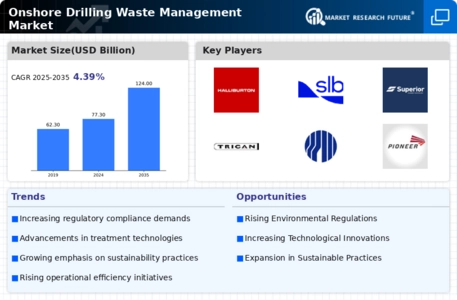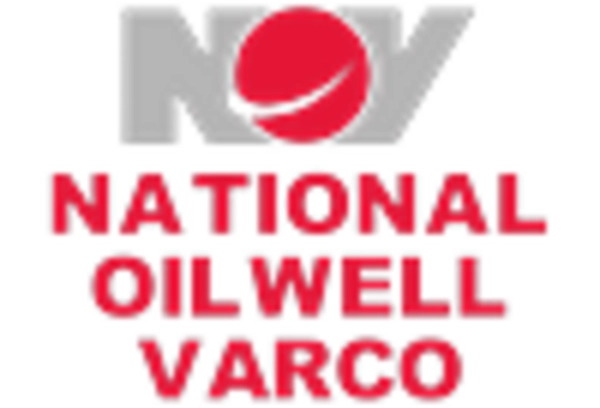Growing Focus on Sustainability
Sustainability has emerged as a critical driver in the Onshore Drilling Waste Management Market. As environmental concerns continue to rise, stakeholders are increasingly prioritizing sustainable waste management practices. This shift is reflected in the growing adoption of circular economy principles, where waste is viewed as a resource rather than a liability. Companies are now investing in technologies that enable the recycling and repurposing of drilling waste, thereby minimizing environmental impact. Recent statistics indicate that the market for sustainable waste management solutions is projected to grow at a compound annual growth rate (CAGR) of 15% over the next five years. This focus on sustainability is expected to significantly influence the Onshore Drilling Waste Management Market, as companies strive to enhance their environmental performance.
Collaborative Approaches to Waste Management
The Onshore Drilling Waste Management Market is witnessing a trend towards collaborative approaches among stakeholders. Oil and gas companies, waste management firms, and regulatory agencies are increasingly working together to develop comprehensive waste management strategies. This collaboration is essential for sharing best practices, resources, and technologies that can enhance waste management efficiency. For example, joint ventures between drilling companies and waste management service providers have been established to streamline operations and reduce costs. Such partnerships not only facilitate compliance with environmental regulations but also promote sustainable practices within the industry. As these collaborative efforts gain traction, they are likely to drive growth in the Onshore Drilling Waste Management Market.
Technological Advancements in Waste Management
Technological innovations play a pivotal role in shaping the Onshore Drilling Waste Management Market. The advent of advanced waste treatment technologies, such as thermal desorption and bioremediation, has enhanced the efficiency of waste management processes. These technologies not only improve the recovery of valuable resources from drilling waste but also reduce the environmental impact associated with disposal. According to recent data, the adoption of such technologies has increased by approximately 25% over the past few years, indicating a strong trend towards modernization in waste management practices. This shift towards technology-driven solutions is expected to propel the Onshore Drilling Waste Management Market forward, as companies seek to optimize their operations and comply with evolving regulations.
Economic Growth and Increased Drilling Activities
Economic growth in various regions is driving an increase in drilling activities, which in turn fuels the Onshore Drilling Waste Management Market. As energy demand rises, oil and gas exploration and production activities are expanding, leading to a higher volume of drilling waste generated. This surge in drilling operations necessitates effective waste management solutions to handle the associated waste streams. Recent data suggests that the number of active drilling rigs has increased by approximately 20% in the last year, highlighting the growing need for efficient waste management services. Consequently, companies are compelled to invest in robust waste management strategies to address the challenges posed by increased drilling activities, thereby propelling the Onshore Drilling Waste Management Market.
Regulatory Compliance and Environmental Standards
The Onshore Drilling Waste Management Market is increasingly influenced by stringent regulatory frameworks and environmental standards. Governments and regulatory bodies are implementing more rigorous guidelines to ensure that drilling operations minimize their ecological footprint. This has led to a heightened demand for effective waste management solutions that comply with these regulations. For instance, the implementation of the Resource Conservation and Recovery Act (RCRA) in various regions mandates proper disposal and treatment of hazardous waste, thereby driving the market for compliant waste management services. As a result, companies are investing in advanced technologies and practices to meet these requirements, which is likely to bolster the Onshore Drilling Waste Management Market.

















Leave a Comment